Soundsmith Otello by Greg Simmons
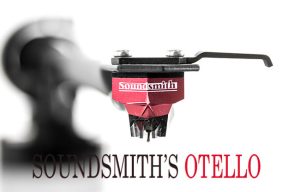
Attainable Excellence
 The Soundsmith Otello is the point of entry into Peter Ledermann’s world of fixed-coil phono cartridges. I’ve written about this cartridge in the context of modifying my trusty Technics 1200 M3D and then – due to my clumsiness – reporting on Soundsmith’s excellent cartridge rebuilding program.
The Soundsmith Otello is the point of entry into Peter Ledermann’s world of fixed-coil phono cartridges. I’ve written about this cartridge in the context of modifying my trusty Technics 1200 M3D and then – due to my clumsiness – reporting on Soundsmith’s excellent cartridge rebuilding program.
So why write about this pickup a third time? Well, I purchased this particular cartridge as a “very lightly used” re-sale from a seller on USAudioMart. I thought the cartridge sounded good, and I said so in that article. But when it came back from the rebuild, its sound was markedly better than it had been prior to service and significantly better than I’d originally realized. I hadn’t done it justice in my original discussions and felt a full review was in order. “Very lightly used” is apparently a term applied with a great deal of flexibility. I am chastened by the experience.
Soundsmith
Peter Ledermann founded Soundsmith in 1970 as an audio engineering mentorship program to train a new generation of technicians who could preserve audio engineering skills at a time when much of that knowledge was in decline.
The opportunity to fill an audio niche appeared when, in 1986, Bang & Olufsen stopped building phono cartridges, leaving owners of their turntables in a lurch. B&O tables not only featured moving-iron cartridges but also a proprietary arm mount making them incompatible with the standard half-inch headshells used by almost every other turntable or tonearm maker. To meet the demand, Ledermann sought and received license to reverse-engineer B&O cartridges creating a new side business for Soundsmith.
Of course, that was not the end of the story. In addition to recreating Denmark’s finest, Ledermann saw a path forward with evolutionary improvements for moving iron designs, particularly lowering the mass in the internal generator structure. Eventually, those engineering improvements made their way into Soundsmith’s line of standard half-inch mount MI cartridges, which over recent decades have benefitted from multiple generations of design improvements. Except for a foray into a Strain Gauge cartridge system, which is also available, moving-iron has been Soundsmith’s bread and butter ever since.
And, if you should have one of those old B&O turntables, Soundsmith still builds a variety of cartridges for them.
Moving Irons, Coils, and Magnets
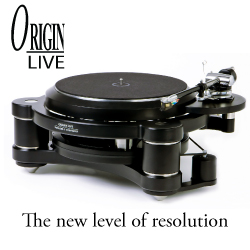 Moving iron – Soundsmith refers to their moving-iron designs as ‘fixed-coil’ to ensure marketplace differentiation from moving-coil designs – is sort of the ‘third way’ of generating an analog signal along with the more widely used moving-magnets (MM) and moving-coils (MC). I will briefly distill the differences: A moving magnet has the magnet attached to the end of the cartridge’s cantilever, which vibrates over fixed coils to generate output. A moving coil, by contrast, has the coils attached to the cantilever, and those coils vibrate within a magnetic field. A moving-iron cartridge has both a fixed coil and a fixed magnet with a bit of ferrous metal attached to the end of the cantilever. The bit of ferrous metal moves in relation to both the magnet and the coil to generate the signal. MI adherents point to the significantly lower mass of the ferrous metal than can be achieved with either coils or magnets when attached to the end of the cantilever. Less mass equals less inertia to overcome to generate a signal, precisely the claimed advantage of this type of cartridge. This is an obvious oversimplification of these three cartridge types, but you get the idea. If you want to dig a little deeper, there is boatloads of information – videos, diagrams, and text – about all three cartridge types online, including on Soundsmith’s website, where you’ll find a good article modestly titled “Why FIXED COIL kicks ass!”.
Moving iron – Soundsmith refers to their moving-iron designs as ‘fixed-coil’ to ensure marketplace differentiation from moving-coil designs – is sort of the ‘third way’ of generating an analog signal along with the more widely used moving-magnets (MM) and moving-coils (MC). I will briefly distill the differences: A moving magnet has the magnet attached to the end of the cartridge’s cantilever, which vibrates over fixed coils to generate output. A moving coil, by contrast, has the coils attached to the cantilever, and those coils vibrate within a magnetic field. A moving-iron cartridge has both a fixed coil and a fixed magnet with a bit of ferrous metal attached to the end of the cantilever. The bit of ferrous metal moves in relation to both the magnet and the coil to generate the signal. MI adherents point to the significantly lower mass of the ferrous metal than can be achieved with either coils or magnets when attached to the end of the cantilever. Less mass equals less inertia to overcome to generate a signal, precisely the claimed advantage of this type of cartridge. This is an obvious oversimplification of these three cartridge types, but you get the idea. If you want to dig a little deeper, there is boatloads of information – videos, diagrams, and text – about all three cartridge types online, including on Soundsmith’s website, where you’ll find a good article modestly titled “Why FIXED COIL kicks ass!”.
Moving-iron cartridges sometimes seem like a small skiff bobbing in an oceanic marketplace of moving-magnet and moving-coil cartridges – there are only a few companies that make them – but there’s absolutely no sonic reason why this should be the case. MI cartridges are capable of producing wonderful sound, and the best of them travel in the company of the finest MCs.

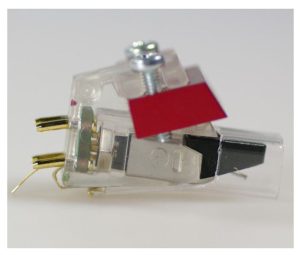
The Soundsmith Otello Fixed-Coil Phono Cartridge
The Otello retails for $599, which includes a $200 price increase that became effective at the beginning of the year. Ledermann cited rising material and component costs, which are just about universal across the industry these days (that and ten bucks will get you a dozen eggs). With the increase, the Otello is perhaps not the screaming bargain that it was when it was only $400, but it is still a lot of cartridge for the money, and it remains an excellent value.
 The Otello features a fixed-coil (MI) generator with a .20mm titanium bonded elliptical stylus on a good old-fashioned bent and flattened aluminum alloy pipe. It outputs 2.12 mV, lower than the 4-5 mV common among moving magnet carts but perfectly compatible with most MM phono stages. I run my Otello through the MM inputs on both my Cary Preamp and Lyric PS-10 phono stage with excellent results. The mounting holes are threaded (I will forever be excited about this innovation). Recommended tracking force is 1.3 to 1.6 grams.
The Otello features a fixed-coil (MI) generator with a .20mm titanium bonded elliptical stylus on a good old-fashioned bent and flattened aluminum alloy pipe. It outputs 2.12 mV, lower than the 4-5 mV common among moving magnet carts but perfectly compatible with most MM phono stages. I run my Otello through the MM inputs on both my Cary Preamp and Lyric PS-10 phono stage with excellent results. The mounting holes are threaded (I will forever be excited about this innovation). Recommended tracking force is 1.3 to 1.6 grams.
The Otello is visually striking, with a black body and a crimson star prow. The body itself, featuring Soundsmith’s Dynamic Energy Management System (DEMS), is claimed to direct internal vibrations away from the stylus to dissipate in the arm to improve stylus/groove contact. Among other features are extended mandibles on either side of the cantilever, adding a little extra protection to the business end of the cartridge – a great idea that was once a common feature but is rarely seen these days. The Otello also comes with three half-inch white spacers made of Alumina – an aluminum/ceramic compound – designed to fit into three grooves carved into the top of the cartridge. Two of them are split cylinders intended to be used as isolators between the cartridge and the headshell to resolve ground loops. The third full cylinder can be placed in the center slot on the cartridge, where it will act as a fulcrum to adjust azimuth by loosening or tightening the cartridge screws should your headshell or arm not offer this function. As far as I am aware, Soundsmith is the only manufacturer to offer this feature, or anything like it, built directly into their cartridges.
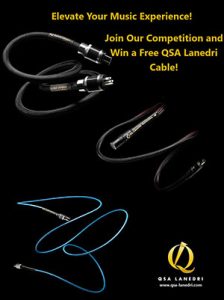 When I acquired the Otello, I did so specifically to pair it with a newly rebuilt SME 3009 Improved Fixed Headshell tonearm. This arm is a lightweight affair with an effective mass of 9.5g, designed to be paired with the ubiquitous Sure V15 series and other high-compliance moving magnet cartridges of the 1970s. The Soundsmith Otello at 9.18g has a high-ish effective compliance of 22 mm/mN and pairs well with this arm, delivering a resonant frequency of 7.63 Hz. That is a bit on the low side but still within the commonly recommended 7 – 12 Hz spread. If, for some reason, you feel the need for even greater compliance, Soundsmith can also build you a 28 mm/mN version that tracks at a mere 1.0 to 1.2 grams!
When I acquired the Otello, I did so specifically to pair it with a newly rebuilt SME 3009 Improved Fixed Headshell tonearm. This arm is a lightweight affair with an effective mass of 9.5g, designed to be paired with the ubiquitous Sure V15 series and other high-compliance moving magnet cartridges of the 1970s. The Soundsmith Otello at 9.18g has a high-ish effective compliance of 22 mm/mN and pairs well with this arm, delivering a resonant frequency of 7.63 Hz. That is a bit on the low side but still within the commonly recommended 7 – 12 Hz spread. If, for some reason, you feel the need for even greater compliance, Soundsmith can also build you a 28 mm/mN version that tracks at a mere 1.0 to 1.2 grams!
Finally, I would be remiss if I did not mention an important feature of all Soundsmith cartridges: the company’s re-tip policy. Most cartridge makers will charge 50% of the original price for a re-tip/rebuild, which can add up fast on a high-end moving coil. Soundsmith charges a small fraction of that – from 11% to 20% of MSRP – with prices listed clearly on their website. When I had this Otello re-tipped, it cost a whopping $100, though it’s since gone up to $120. The ability to renew a pickup at a reasonable cost is an enormous advantage if your intention is long-term cartridge matrimony.
Setup
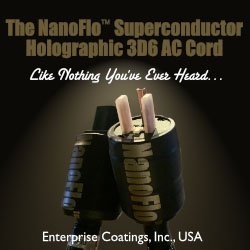 Setting up the Otello on the SME 3009 was straightforward enough, as SME tonearms feature fixed mounting holes rather than the more common adjustable slots. As long as the pivot-to-spindle distance is correct, the geometry you get is the geometry you get, at least according to SME. I set tracking force at 1.5g.
Setting up the Otello on the SME 3009 was straightforward enough, as SME tonearms feature fixed mounting holes rather than the more common adjustable slots. As long as the pivot-to-spindle distance is correct, the geometry you get is the geometry you get, at least according to SME. I set tracking force at 1.5g.
VTA gave me some problems, but that had more to do with the arm than the cartridge. The 3009 arm has a hooded basket headshell that prevents a visual check of whether the top of the cartridge is parallel with the record surface, so I used the arm tube for the same check. This clearly left the cartridge too high in the rear, and the treble got very hard and shrill very fast. I had to make a bunch of adjustments, down, then back up after I over-compensated, and so on, until I had it right. Once to my liking, the treble was sweet with good extension, though the cartridge does not produce an abundance of air.
Listening
Just to get this out of the way, the Otello is very quiet-in-the-groove – far less sensitive to background imperfections than any of the moving coils I’ve used recently. My Lyra is a bit of a prima donna for pristinely clean vinyl, and the Otello bested it on a wide selection of records.
To my surprise, the Otello, paired with the Tech-12 and SME arm, throws a soundstage almost as large as my Lyra Delos residing in the Groovemaster arm on my Star Sapphire – certainly as tall if not quite as wide – and larger than both of my Audio-Technica moving coils. I hadn’t expected this from the Tech-12 with its low-mass platter and the Otello’s moderate channel separation of >24 dB, but there was no denying it. In addition, this combination offers a good three-dimensional presentation with real stage depth.
Were my Lyra Delos a painted room, it would be clear, silvery, and off-white. In contrast, the Otello would show off a more polychromatic scheme, perhaps some actual pigment with contrasting trim. Initially, I thought the cartridge might be guilty of a bit of textural hyperbole in a good way. But eventually, I concluded that this was a trick of my own perception. I’ve been using AT moving coils and the Lyra for over a decade, all of which lean towards cool, analytical detachment. The Otello is certainly warmer, though it’s never overblown or gooey.
A good example is the recent Erato pressing of Samuel Barber’s “Angus Dei,” performed by the Choir of New College, Oxford, under the direction of Edward Higginsbottom (no catalog # on the record). This poignant piece is served well by the more personal touch, the warmth enhancing the emotional content of the music, and the connection to the performance. Yeah, the Otello missed some of the small bits I know are on this record, but the performance gained a bit of humanity. The Otello was compelling.
At its price point, I didn’t expect the Otello to be a detail giant slayer, but it still acquits itself well. Looking for a real symphonic torture test, I listened to the 1960 release of Leonard Bernstein conducting the New York Phil on Charles Ives Symphony No. 2 (Columbia KS 6155), which the defunct N.Y. Herald Tribune named its “Best Orchestral Recording of The Year.” I played this record back-to-back on my Lyra/Sota and then the Otello/Tech-12. All of the stage depth was represented through the Otello, but individual instruments became somewhat subsumed into a denser massed orchestra, particularly the dynamic wallops where bass snap and snare drums receded into the mix, still clearly audible but less pronounced. But, referring back to the previous paragraph, the tonality, and textures delivered by the Otello more than compensated for any minor omissions and in no way detracted from the performance. The musical point was never lost. Also, just to make note of it, through the really loud passages on this or any other record, I never heard anything I could identify as mistracking.
But enough of that highfalutin white-glove music.
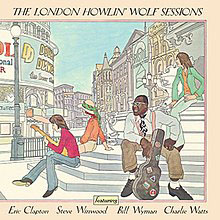 “The Howlin’ Wolf London Sessions” (Chess 9297), which in addition to Wolf and Hubbert Sumlin, also features an all-star who’s-who backing band including Eric Clapton and Steve Winwood, as well as the Rolling Stones’ rhythm section of Bill Wyman and Charlie Watts, really plays to the Otello’s strengths. The cartridge is definitely more successful with this music than with big orchestral works. Wolf’s voice – enormous under any circumstance – is larger than life here, his gravel bucket delivery easily shoving the rest of the band off to the sides. With fewer instruments competing for attention, each of them enjoys greater space on the stage. Most importantly, they sound right. Distorted guitars have good jangle and grip, Bill and Charlie have authoritative, dynamic thwack (‘Thwack’ is the highly technical term for ‘Wallop’), and Wolf’s vocals are nicely illuminated. The Otello threw all of this across the room to my happy ears. This album is by no means an audiophile spectacular (though someone ought to do a hi-quality reissue), but it is decently recorded, and the Otello makes it sound great.
“The Howlin’ Wolf London Sessions” (Chess 9297), which in addition to Wolf and Hubbert Sumlin, also features an all-star who’s-who backing band including Eric Clapton and Steve Winwood, as well as the Rolling Stones’ rhythm section of Bill Wyman and Charlie Watts, really plays to the Otello’s strengths. The cartridge is definitely more successful with this music than with big orchestral works. Wolf’s voice – enormous under any circumstance – is larger than life here, his gravel bucket delivery easily shoving the rest of the band off to the sides. With fewer instruments competing for attention, each of them enjoys greater space on the stage. Most importantly, they sound right. Distorted guitars have good jangle and grip, Bill and Charlie have authoritative, dynamic thwack (‘Thwack’ is the highly technical term for ‘Wallop’), and Wolf’s vocals are nicely illuminated. The Otello threw all of this across the room to my happy ears. This album is by no means an audiophile spectacular (though someone ought to do a hi-quality reissue), but it is decently recorded, and the Otello makes it sound great.
Some people trash this record as an also-ran behind Wolf’s original 1950s Chess sessions, but I beg to differ. This is a great band playing great music and, IMHO, essential if you’re interested in the bridge between Chicago blues and what came next. Wolf leads these British aspirants through a selection of his best-known songs, and they step up to the occasion.
 Another record I’ve really been enjoying with the Otello is Dominique Fils-Aimee’s “Three Little Words” (Modulor MODLP090). I first heard this album at last year’s Capital Audio Fest. I enjoyed it so much that I ordered it from Amazon UK, as the vinyl has not been released here in the States. Though Aimee demonstrates real lung capacity on several tracks, she’s at her best when she moves to a quieter, sometimes breathy delivery. She overdubs her own backing vocals, which lends the peculiar effect of hearing what is clearly the same singer in multiple parts. Backing musicians are sparse and restrained so as not to compete with her central voice. Part soul, part jazz, part torch song, and even a bit of doo-wop, this record is by turns upbeat, contemplative, and personal, spotlighting a truly compelling singer spinning a wonderful performance of her own music. The Otello’s relative warmth, liquidity, and overall competence have been a real asset here, lending Ms. Aimee’s voice just a touch of extra passion. Again, the small-scale production plays right into the Otello’s strengths, portraying the voice and other instruments in their context to deliver a complete, well-framed performance.
Another record I’ve really been enjoying with the Otello is Dominique Fils-Aimee’s “Three Little Words” (Modulor MODLP090). I first heard this album at last year’s Capital Audio Fest. I enjoyed it so much that I ordered it from Amazon UK, as the vinyl has not been released here in the States. Though Aimee demonstrates real lung capacity on several tracks, she’s at her best when she moves to a quieter, sometimes breathy delivery. She overdubs her own backing vocals, which lends the peculiar effect of hearing what is clearly the same singer in multiple parts. Backing musicians are sparse and restrained so as not to compete with her central voice. Part soul, part jazz, part torch song, and even a bit of doo-wop, this record is by turns upbeat, contemplative, and personal, spotlighting a truly compelling singer spinning a wonderful performance of her own music. The Otello’s relative warmth, liquidity, and overall competence have been a real asset here, lending Ms. Aimee’s voice just a touch of extra passion. Again, the small-scale production plays right into the Otello’s strengths, portraying the voice and other instruments in their context to deliver a complete, well-framed performance.
If you haven’t heard of Ms. Fils-Aimee, I can’t recommend her highly enough. This record is the last in a trilogy, the other two albums being “Nameless” and “Stay Tuned”. All of them showcase similarly good production values, and – with criminally sparse vinyl availability – all of them are available on Tidal and the other streaming services.
Conclusion

When I initially wrote about this cartridge/turntable combo in another article, I stated that the Soundsmith Otello cartridge was more successful with smaller-scale jazz and popular music than with large-scale orchestral works, and I’m going to stand by that statement. Its strengths – vibrancy, humanity, and warmth – were best reflected in my system with simpler instrumental arrangements. The Otello presented vocals – male or female – with a rich delivery that enhanced many performances. It is a most agreeable musical partner.
For the past four years or so, the Lyra Delos mounted on my Sota has been my day-to-day cartridge as well as the standard against which I review other cartridges. It’s a very accurate pickup with an enormous soundstage and lots of grainless detail. But it’s also a bit dry and clinical sounding, and of late, I’ve come to find it a little boring. The Delos’s somewhat sterile view of music, which was so thrilling for its hi-fi tricks when I first got it four years ago, now leaves me craving a little more richness and beauty. The Otello won’t replace the Delos as a tool for reviewing music and equipment, but for much of my listening – particularly popular music – it has ingratiated itself as my go-to front end when I just want to enjoy a record. It does wonders with Parliament, Dean Martin, string quartets, and even harder-edged rock and roll.
Perhaps best of all, the Soundsmith Otello is attainable. It’s not super expensive, but it nevertheless offers many of the qualities that audiophiles seem to crave: good detail, resolution, dense textures, and superb overall musicality. It isn’t going to be all things to all listeners – few cartridges can be – but if its best qualities align with your musical taste, it would be hard to go wrong with this one. The Soundsmith Otello is an easy recommendation.

![]()

greg simmon
Specifications
Price: $599.00
Cartridge Type: Fixed Coil (Moving Iron)
Stylus: Bonded Elliptical, 0.2mm round
Cantilever: Aluminum Alloy
Recommended Tracking Force: 1.3 to 1.6g
Compliance: 22 mm/mN
Frequency Response: 20 – 20,000 Hz ± 2.5 Hz
Chanel Separation: >24 dB
Cartridge Output: 2.12 mV
Cartridge Weight: 9.2g
Recommended Load Resistance: ³47kW
Website: www.sound-smith.com
Greg’s Associated Equipment:
Analog Front End
SOTA Sapphire turntable w/Audio Creative Groovemaster III Tonearm
Rek-O-Kut T12h turntable w/Karmadon 12” viscous damped unipivot tonearm
Technics SL-1200 M3D wSME 3009 Improved Fixed Headshell
Phono Cartridges
Lyra Delos, Moving Coil
Soundsmith Otello, Moving Iron
Miyajima Spirit Mono, Moving Coil
Audio-Technica OC/9-III, Moving Coil
Audio-Technica AT33Sa, Moving Coil
Digital Front End
Digi-what?!!
Amplification
Cary SLP-98P preamp w/ phono stage
Parasound JC5 Stereo Amplifier
Aurorasound SP-03H step-up transformer
Lyric Audio PS-10 MC/MM phono stage
Loudspeakers
Verity Audio Fidelity Encore
Magnepan MG-IIa
Cabling
Finley Audio Cirrus interconnects, speaker, and power cables.
A variety of other wires from Nordost, Cullen, AudioQuest and MIT.
Accessories
AudioQuest Niagara 1200 power conditioner
Tice Box power conditioner
Nordost Sort Kones AC vibration dampers
Mapleshade Audio Rack
One thought on "Soundsmith Otello by Greg Simmons"
Leave a Reply
Stereo Times Masthead
Publisher/Founder
Clement Perry
Editor
Dave Thomas
Senior Editors
Frank Alles, Mike Girardi, John Hoffman, Russell Lichter, Terry London, Moreno Mitchell, Paul Szabady, Bill Wells, Mike Wright, Stephen Yan, and Rob Dockery
Current Contributors
David Abramson, Tim Barrall, Dave Allison, Ron Cook, Lewis Dardick, Dan Secula, Don Shaulis, Greg Simmons, Eric Teh, Greg Voth, Richard Willie, Ed Van Winkle, and Rob Dockery
Music Reviewers:
Carlos Sanchez, John Jonczyk, John Sprung and Russell Lichter
Site Management Clement Perry
Ad Designer: Martin Perry





Nicely done